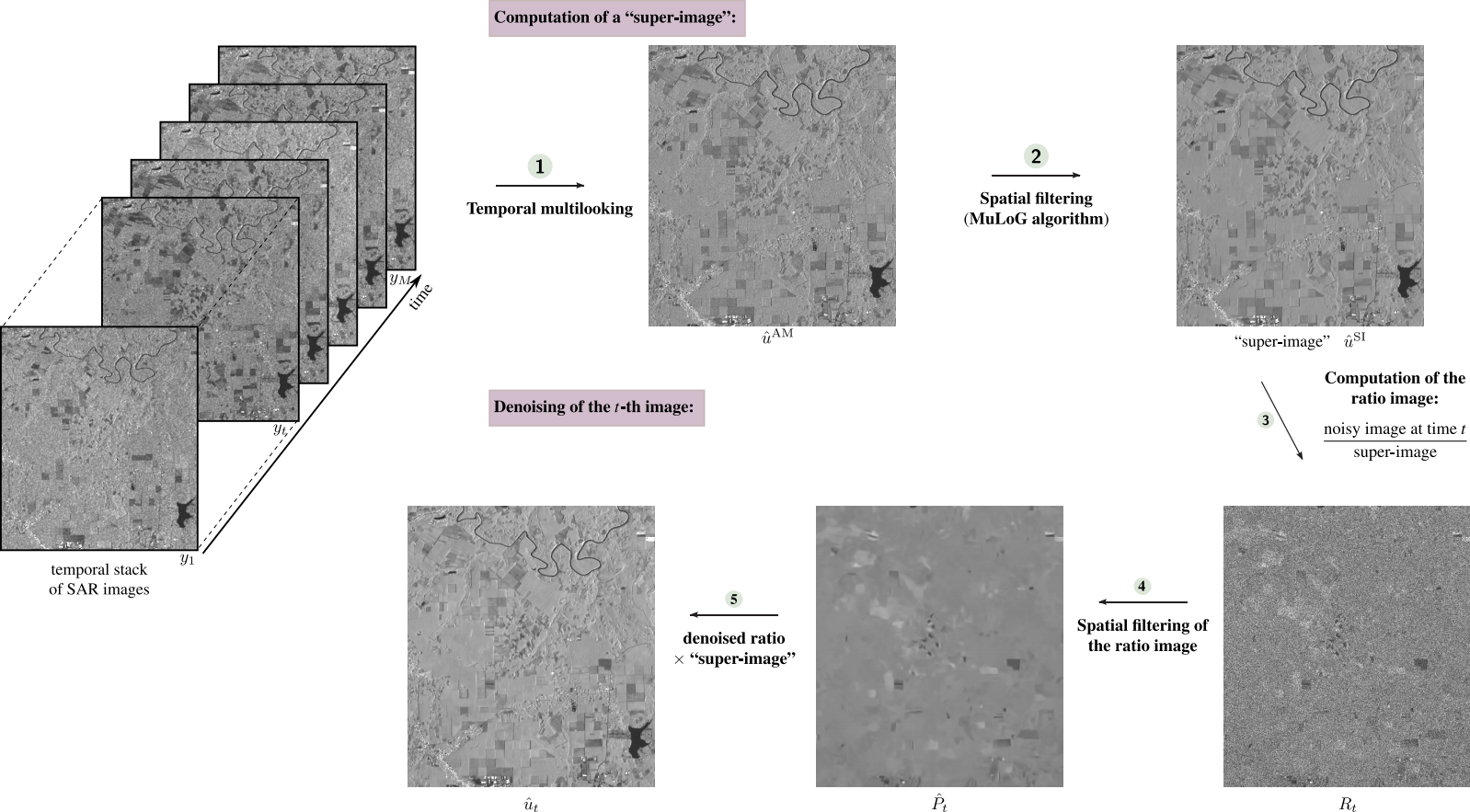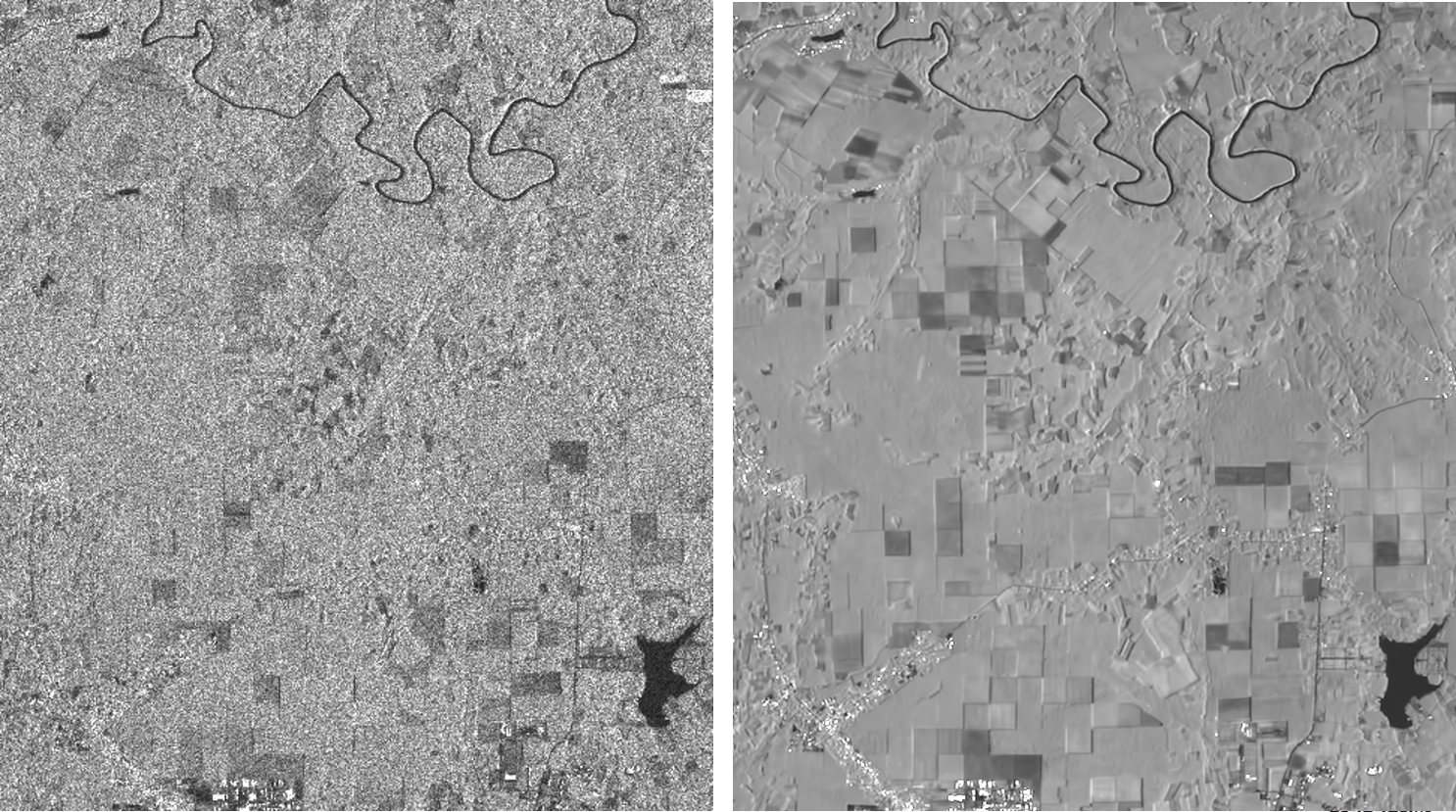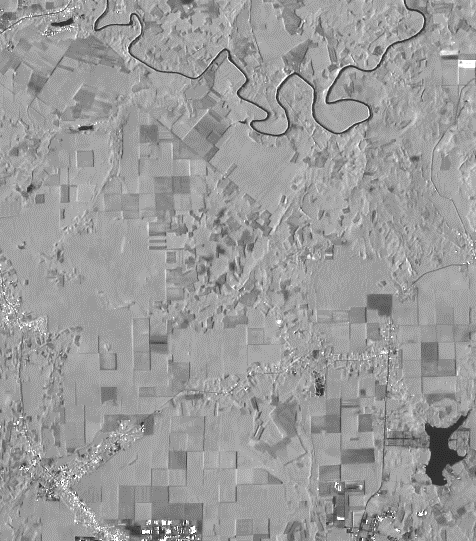RABASAR: A fast ratio based multi-temporal SAR despeckling
This work has been done in collaboration with Loïc Denis, Charles-Alban Deledalle, Henri Maître, Jean-Marie Nicolas and Florence Tupin.
The principle of the proposed method
The proposed approach can be divided into three steps:
calculation of the “super-image” through temporal averaging;
denoising the ratio images formed through dividing the noisy images by the “super-image”;
computing denoised images by multiplying the denoised ratio images with the “super-image”.
Thanks to the spatial stationarity improvement in the ratio images, denoising these ratio images with a speckle-reduction method is more effective than denoising the original multitemporal stack. The data volume to be processed is also reduced compared to other methods through the use of the “super-image”.
 Figure 1. Multi-temporal SAR image denoising framework
Figure 1. Multi-temporal SAR image denoising framework
The interest of ratio image
In case of temporally stable area and ENL of the super-image infinite
ratio image = pure Gamma noise of mean 1
In case of a limited ENL and temporal variations
Fisher pdf that can be approximated by Gamma pdf
In all situations, ratio image with fewer structures and variations than an original SAR image
→ Easier to denoise !
Experimental results
31 Sentinel-1 images which are downloaded from Sentinel open access hub are used.
MuLog-BM3D method is used to denoise the super-image which is acquired through temporal averaging.
 Figure 2. Noisy image and MuLog-BM3D denoised super-image.
Figure 2. Noisy image and MuLog-BM3D denoised super-image.

Figure 3. RABASAR denoised image
References
[1] Deledalle, C.A., Denis, L., Tabti, S. and Tupin, F., 2017. MuLoG, or How to apply Gaussian denoisers to multi-channel SAR speckle reduction?. IEEE Transactions on Image Processing, 26(9), pp.4389-4403.
[2] Zhao, W., Deledalle, C.A., Denis, L., Maître, H., Nicolas, J.M. and Tupin, F., 2018, July. RABASAR: A FAST RATIO BASED MULTI-TEMPORAL SAR DESPECKLING. In IEEE International Geoscience and Remote Sensing Symposium, IGARSS 2018.
[3] Zhao, W., Denis, L., Deledalle, C.A., Maître, H., Nicolas, J-M. and Tupin, F. Ratio-Based Multitemporal SAR Images Denoising: RABASAR. IEEE Transactions on Geoscience and Remote Sensing. 2019.
Code links
MuLog-BM3D: https://www.math.u-bordeaux.fr/~cdeledal/mulog.php
RABASAR https://bitbucket.org/cdeledalle/rabasar
